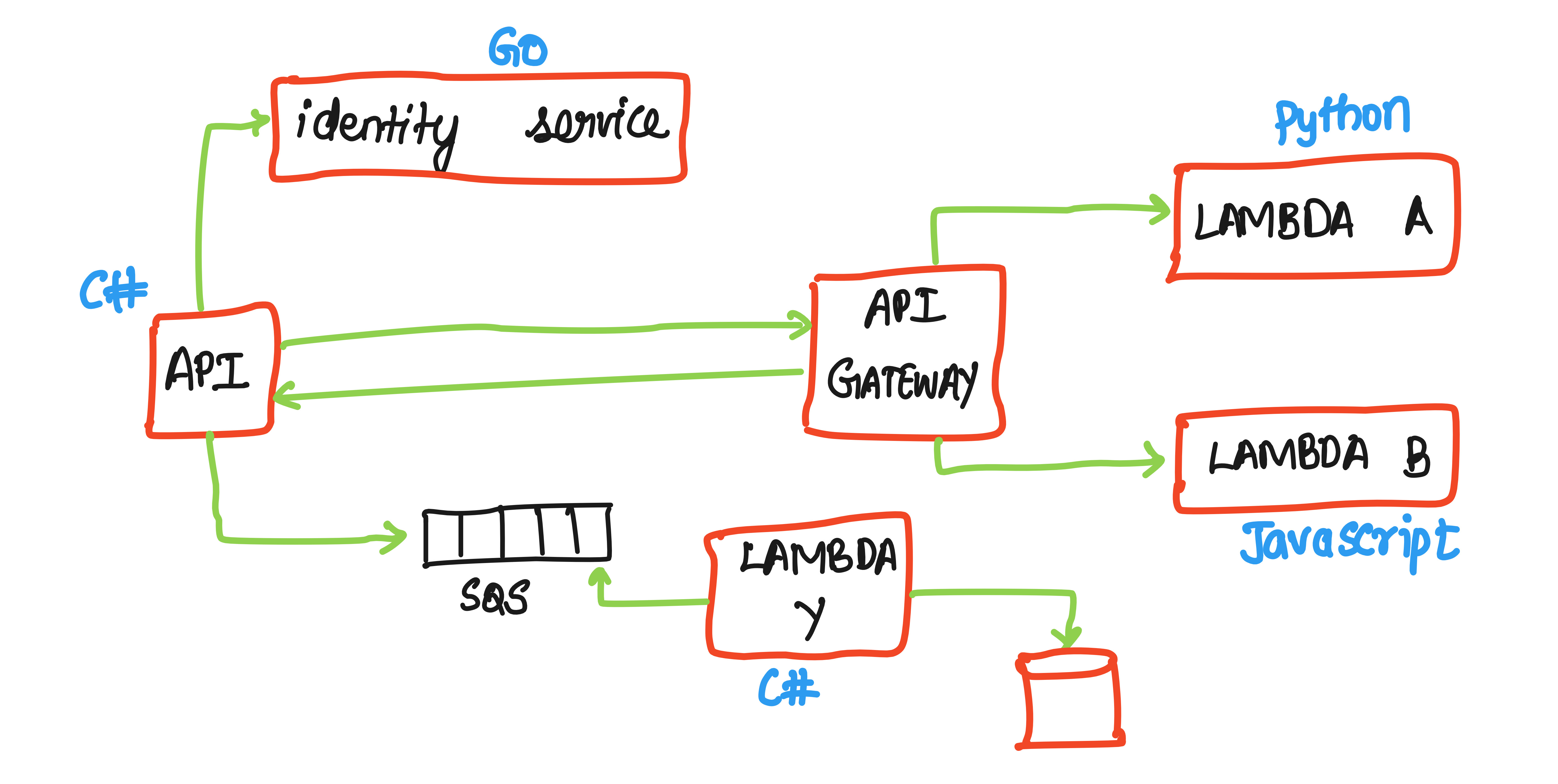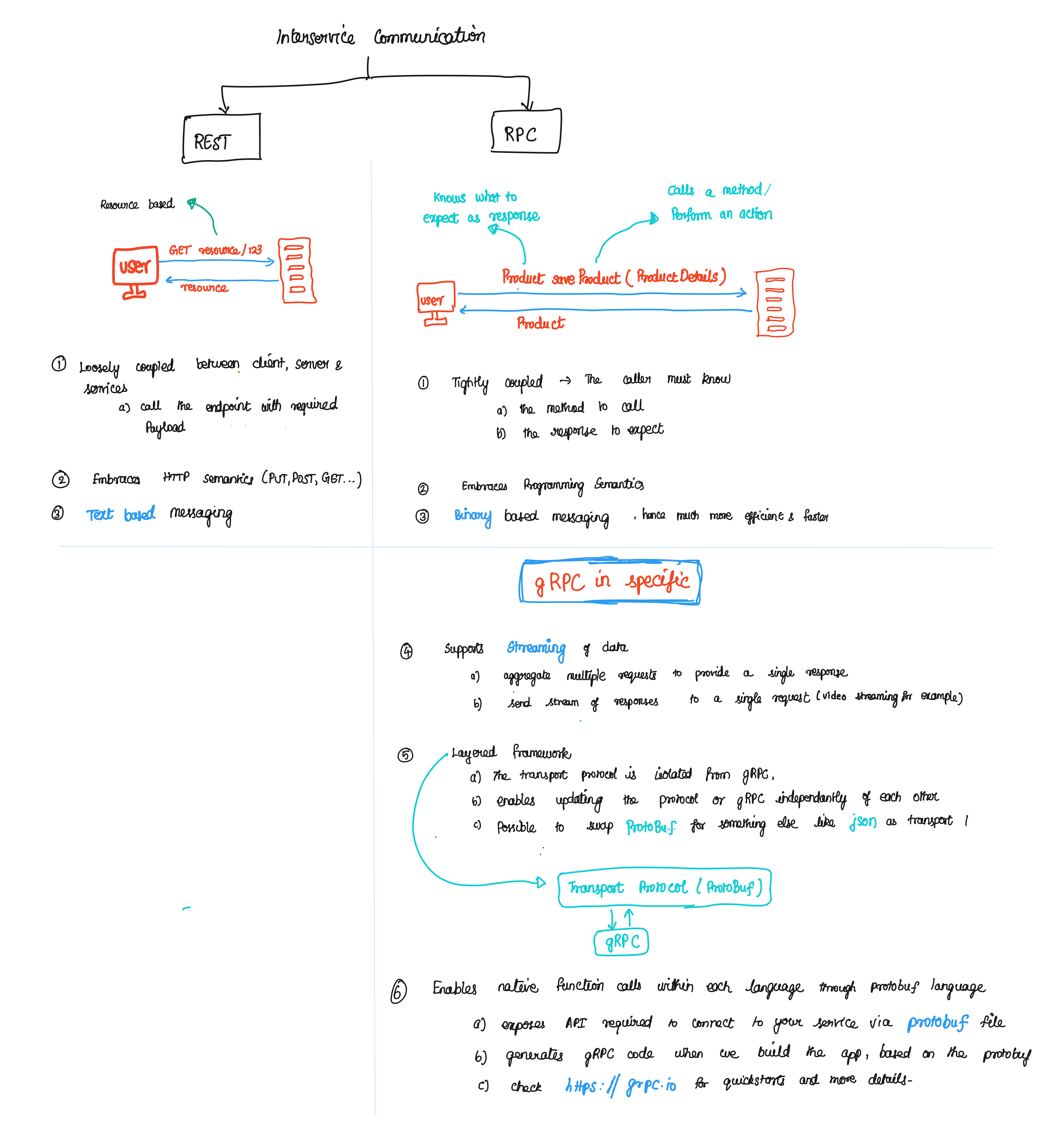Table of contents
- Introduction to RPC (and to an extent gRPC)
- What are Interservice communications?
- Interservice communication options
Introduction to RPC (and to an extent gRPC)
I’ve always worked with REST APIs at work, in my personal projects etc. Whenever I wanted to build an API, I never even had to think twice about a different stratgey until now. I’ve read about RPCs at university, seen some examples and hear people talk about gRPC sometimes, but I never took took it seriously so far. So this is me trying to learn more about it, document my learnings so I can come back at a later stage and still remember what the heck gRPC is all about!
If you have a subscription to Pluralsight, this course has great explanations for most of the gRPC stuff I’ve discussed below.
What are Interservice communications?
In our current technology landscape, it is quite popular to split a product into smaller services and have them be independant of each other. In other words, we prefer microservices architeture where possible. The benefits of such architecture are many and not in scope of this post. But what is in scope is the way we communicate between these services to get resources or perform some actions.
With microservice architecture comes the freedom to choose the best programming language for a particular service. Let’s say as an example I have the following architecture:
- APIs hosted in EKS written in
C# - Identity service for Auth, written in
Go - A couple of lambdas behind an API gateway written in
pythonandJavaScript

Interservice communication options
For an architecture written in multiple languages such as above, there are two simple ways enable communication between them:
- Resource based communication via HTTP
(REST) - Action based communication via
Remote Procedure Calls (RPC)

REST vs RPC
I’ve tried to summarise some very basic differences between REST and RPC below
| S.No | REST (REpresenational State Transfer) | RPC (Remote Procedure Call) |
|---|---|---|
| 1. | Resource based communication | Action based communication |
| 2. | Loosely coupled between client, server and services | Tightly coupled - The caller must know both the method to call and all the response to expect |
| 3. | Embraces HTTP semantics (GET product/123) | Embraces programming semantics (function call such as client.getProduct(ProductDetails)) |
| 4. | Text based messaging | Binary based messaging, hence much more efficient and faster |
gRPC
gRPC, as you might have guessed, was developed by Google based on their internal tool called Stubby which they created to make interservice communication within Google products faster and efficient. Touching on some highlights about gRPC below:
- Cross-platform support
- Supports a wide variety of languages (C++, Java, C#, Go, Python, Ruby to name a few)
- Supports Streaming content
- aggregate multi-part requests and provide a single response or
- send a stream of responses for a single request (video streaming, for example)
- Layered framework
- The
gRPCframerwork is isolated from thetransport protocol - This enables to update gRPC framework andtTransport protocols independantly of each other
- This also means that it is asy to replace the default transport protocol of gRPC from
protobufto something else likejson
- The
- Exposes API via protobuf files
- Generates gRPC code based on protobuf files as we build a project. These generated code enables a client to call gRPC method natively as if it was written in the same language
